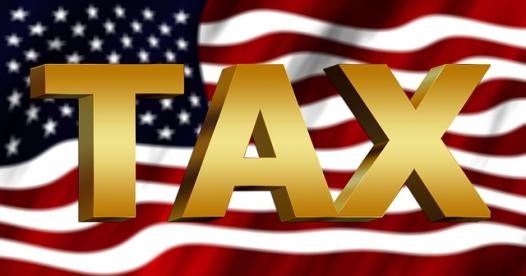On January 18, 2017, the US Department of the Treasury (Treasury) released proposed regulations (Proposed Regulations) regarding the implementation of Section 1101 of the Bipartisan Budget Act of 2015 (the Act), which was enacted into law on November 2, 2015. The Act instituted a new regime for federal tax audits of entities treated as partnerships for US federal income tax purposes (the New Audit Rules) effective for tax returns filed with respect to tax years beginning after December 31, 2017. For prior coverage of the New Audit Rules, see here.
The Proposed Regulations provide some helpful insights for taxpayers with respect to the likely disposition of some interpretive issues under the New Audit Rules, including:
-
The scope of the New Audit Rules;
-
Electing out of the New Audit Rules;
-
Consistency between partner and partnership returns;
-
Designating the partnership representative;
-
The calculation and modification of imputed underpayments; and
-
Electing the alternative regime under which the tax liability is imposed at the partner level (the Push-out Election).
The Proposed Regulations were not published in the Federal Register and were withdrawn in light of the regulatory freeze announced by the Trump administration in a White House memorandum on January 20, 2017. (In addition, the Tax Technical Corrections Act of 2016, which contained corrections and clarifications to the Act, could be reintroduced in the current Congress.) Thus, pending the issuance of official guidance, taxpayers will continue to have significant uncertainty as to their compliance obligations under the New Audit Rules. Treasury and IRS officials nonetheless have stated that the rules will be implemented on schedule in 2018.
Highlights of the Proposed Regulations
It is unclear whether or when the Proposed Regulations will be reissued and, if reissued, with what revisions to the original version. Accordingly, this summary focuses on select highlights only, and only their broad contours.
SCOPE OF THE NEW AUDIT RULES
The Proposed Regulations take an expansive view of the scope of the New Audit Rules to cover all items and information related to or derived from the partnership. To this end, the Proposed Regulations broadly define the phrase “income, gain, loss, deduction, or credit” so that the phrase includes: the character, timing, source and amount of items; the character, timing and source of the partnership’s activities; contributions to and distributions from the partnership; the partnership’s basis in its assets and the value of those assets; the amount and character of partnership liabilities; the separate category (for purposes of the foreign tax credit limitation), timing and amount of the partnership’s creditable foreign tax expenditures; elections made by the partnership; items related to transactions between a partnership and any partner (including disguised sales and guaranteed payments); any items related to terminations of a partnership; and partners’ capital accounts. The phrase “a partner’s distributive share” is also broadly defined.
SMALL PARTNERSHIP ELECTION OUT
The Act allows eligible partnerships to elect out of the New Audit Rules (the Small Partnership Election Out). An eligible partnership is a partnership with 100 or fewer partners, each of which is an “eligible partner” (generally, an individual, domestic or foreign C corporation, S corporation or an estate of a deceased partner).
The Proposed Regulations provide that the term “eligible partner” does not include partnerships, trusts, foreign entities that are not eligible foreign entities, disregarded entities, nominees, other similar persons that hold an interest on behalf of another person and estates that are not estates of a deceased partner. A partnership with grantor trust or disregarded single-member LLC partners would therefore not be eligible to make the Small Partnership Election Out.
The Preamble notes that the IRS intends to carefully review Small Partnership Elections Out, including situations where two or more partnerships that have elected out should be recast under existing judicial doctrines and general federal tax principles as having formed one or more constructive or de facto partnerships for federal income tax purposes. Examples of such situations include those where the profits or losses of partners are determined in whole or in part by the profits or losses of partners in another partnership, and those that purport to be something other than a partnership, such as the co-ownership of property.
PARTNERSHIP REPRESENTATIVE
The Act replaces the tax matters partner framework under TEFRA with the concept of a partnership representative. Under the Act, each partnership is required to designate a partner or other person with a substantial presence in the United States as the partnership representative who shall have the sole authority to act on behalf of the partnership.
The Proposed Regulations provide that a person has a substantial presence in the United States for purposes of the New Audit Rules if three criteria are met: (1) the person must be able to meet in person with the IRS in the United States at a reasonable time and place as is necessary and appropriate as determined by the IRS; (2) the partnership representative must have a street address in the United States and a telephone number with a US area code where the partnership representative can be reached by US mail and telephone during normal business hours in the United States; and (3) the partnership representative must have a US Taxpayer Identification Number.
The Proposed Regulations also clarify that if an entity is designated as the partnership representative, the partnership must identify and appoint an individual to act on the entity’s behalf. The appointed individual must also have a substantial presence in the United States and the capacity to act. Unlike the TEFRA rules, the partnership may appoint a non-partner to act as the partnership representative.
CALCULATION OF IMPUTED UNDERPAYMENTS
The Act generally provides that audit adjustments to items of partnership income, gain, loss, deduction or credit, and any partner’s distributive share thereof, are determined at the partnership level. In general, unless the partnership makes a Push-out Election, the associated imputed underpayment with respect to a partnership tax year (the reviewed year) is calculated using the maximum statutory income tax rate and is assessed against and collected from the partnership in the year that the audit or any judicial review is completed (the adjustment year), together with any related penalties and interest.
Under the Proposed Regulations, the imputed underpayment is calculated by multiplying the “total netted partnership adjustment” by the highest rate of federal income tax in effect for the reviewed year. The product of that amount is then increased or decreased by any adjustment made to the partnership’s credits. If the result of this summation is a net positive adjustment, the resulting amount is the imputed underpayment, and, if it results in a net non-positive amount, the result is an adjustment that does not result in an imputed underpayment.
The Proposed Regulations provide rules for calculating the total netted partnership adjustment that (1) address (a) adjustments that reallocate items among the partners, (b) adjustments to the partnership’s credits, and (c) a residual grouping covering remaining adjustments, and (2) contain provisions for groupings, subgroupings and netting within these categories.
Each administrative proceeding that ends with the determination by the IRS of an imputed underpayment will result in a general imputed underpayment. However, the IRS may also determine, in its discretion, a specific imputed underpayment on the basis of certain adjustments allocated to one partner or a group of partners based on the items or adjustments having the same or similar characteristics, based on the group of partners sharing similar characteristics, or based on the partners having participated in the same or similar transactions. A partnership may have multiple specific imputed underpayments depending on the adjustments.
The Proposed Regulations contain several examples that demonstrate the calculation of imputed underpayments.
MODIFYING AN IMPUTED UNDERPAYMENT
The Proposed Regulations describe the procedures for a partnership to request modification of an imputed underpayment, as well as the types of modification that may apply. In general, a partnership that has received a notice of proposed partnership adjustment may request modification of a proposed imputed underpayment.
The Proposed Regulations provide that a partnership may request modification of an imputed underpayment in a variety of specified circumstances, including on the basis of the filing of an amended return by a reviewed year partner (or indirect partner); the status of its tax-exempt and foreign partners in certain circumstances; tax rate differences (e.g., with respect to capital gains and qualified dividends); and, in the case of a publicly traded partnership, a net decrease in a specified passive activity loss for specified partners.
ADJUSTMENTS THAT DO NOT RESULT IN AN IMPUTED UNDERPAYMENT
Under the Proposed Regulations, adjustments that do not result in an imputed underpayment are generally taken into account by the partnership in the adjustment year as a reduction in non-separately stated income or as an increase in non-separately stated loss depending on whether the adjustment is to an item of income or loss. Adjustments to separately stated items and credits are taken into account as separately stated items.
Generally, the Proposed Regulations are silent with respect to the allocation of adjustments that do not result in an imputed underpayment, leaving their allocation to the partnership agreement.
PUSH-OUT ELECTIONS
As an alternative to paying tax at the partnership level, the partnership may elect to “push out” adjustments to its reviewed year partners. Specifically, the partnership may make a Push-out Election with respect to any or all imputed underpayments identified in a final partnership adjustment (FPA).
Under the Proposed Regulations, a partnership may only make a Push-out Election within 45 days of the date the FPA was mailed by the IRS. All reviewed year partners are bound by the election and each reviewed year partner must take the adjustments into account and report and pay additional tax (if any).
A reviewed year partner that is furnished a statement of its share of adjustments is required to pay any additional chapter 1 tax (additional reporting year tax) for the partner’s taxable year which includes the date the statement was furnished to the partner. The additional reporting year tax is either the aggregate of the adjustment amounts (which includes “correction amounts” for the reviewed year and for the partner’s taxable years after the reviewed year and before the reporting year), or, if an election is made, a “safe harbor” amount. The Proposed Regulations provide rules for calculating the adjustment amounts and the safe harbor amount.
The Proposed Regulations reserve on the issue of whether the adjustments that are pushed-out to pass-through partners can flow-through to the owners of the pass-through partner.
OPEN ISSUES
There are a number of important and complex issues on which the Proposed Regulations reserve or with respect to which Treasury and the IRS have requested comments, including:
-
Whether the list of “eligible partners” for purposes of the Small Partnership Election Out rules should be expanded;
-
Whether and how to update the rules regarding calculation and modification of underpayments for (1) items that may require special rules or special subgroupings; (2) situations where foreign partners are subject to gross basis taxation and/or may claim reduced tax rates under applicable income tax treaties; and (3) streamlining the amended return modification process;
-
How to allocate partnership adjustments among adjustment year partners;
-
Coordination of the Push-out Election with the withholding rules in the case of foreign partners;
-
Administration of the Push-out Election in tiered structures; and
-
Rules regarding the adjustments to the adjustment year partners’ outside bases and capital accounts and a partnership’s basis and book value in property.
Conclusion
The Proposed Regulations provide some helpful insights for taxpayers with respect to the likely disposition of some interpretive issues under the New Audit Rules. However, many features of the New Audit Rules are not addressed in the Proposed Regulations, and it is unclear whether or when the Proposed Regulations will be reissued and, if reissued, with what revisions to the original version. Until official guidance is issued, taxpayers will continue to have significant uncertainty as to their compliance obligations under the New Audit Rules. In any event, it is clear that the TEFRA framework will no longer apply once the New Audit Rules go into effect in 2018.
Since the operation of the New Audit Rules remains unclear, partnership and LLC agreements now being drafted should address process issues such as authority or approval needed to designate the partnership representative and make elections, the partnership’s obligation (if any) to keep partners informed and allow them to participate and the partners’ obligation to provide information to the partnership.







 i
i


